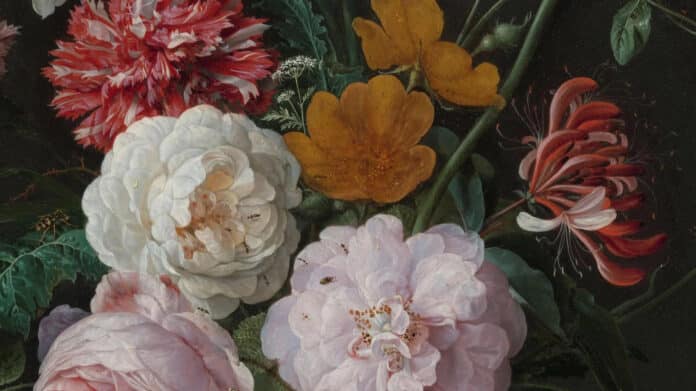In art, arsenic sulfide pigments can produce optical alterations and the production of new chemical species. These events can present themselves in various ways, impacting color loss and chemical species in paint.
When viewing a painting at a museum, the colors they perceive are less vibrant than when the picture was created, a phenomenon previously primarily attributed to light exposure.
Stanford Synchrotron Radiation Lightsource scientist Sam Webb said, “This new degradation pathway explains why some paintings’ colors may fade even when stored in dark rooms. Many Renaissance-type paints can fade or change color, so understanding what causes these things to happen can help conservationists maintain our masterpieces from the past.”
Researchers discovered a new cause of color fading in paintings, which they ascribe to dampness. This new degradation mechanism explains why some artworks’ colors fade even when stored in dark environments.
The researchers from the Department of Energy’s SLAC National Accelerator Laboratory’s Stanford Synchrotron Radiation Lightsource (SSRL), the University of Amsterdam, the Rijksmuseum, and other institutions wanted to know why a form of arsenic called As(V) is found alongside a yellow arsenic sulfide pigment called orpiment. A previous study indicated that converting pigments to As(V) might deteriorate color. However, the causes of this transformation are unknown.
The researchers chose a sample from the 17th-century painting “Still Life with Flowers in a Glass Vase” by Jan Davidszoon de Heem to analyze the As(V) species. The golden eglantine rose in the painting’s center has faded to white.
The researchers zapped the sample with solid X-rays generated at one of SSRL’s beam lines to witness the color change in the yellow rose in finer detail. These X-rays supplied researchers with 2D images of the cross-section of the sample as well as the positions of the arsenic species.
SSRL scientist Johanna Nelson Weker said, “SSRL’s X-rays allowed us to get into the depth of the paint. We saw below the surface layers, which have been exposed to light, and into the layers that haven’t been degraded by light.”
The researchers used an X-ray microscope to study the chemistry of the arsenic species in better resolution and 3D after taking X-ray images. The team was able to map the degradation paths by combining various X-ray approaches, which included X-rays that provided a 2D, birds-eye perspective of the paint and X-rays that showed its 3D structure in great detail. These pathways demonstrated that humidity generates a path for arsenic species to follow.
It required a lot of trial and error to determine that humidity may help degrade colors. First, the researchers generated a sample of the arsenic pigment from scratch. The sample was then treated with egg yolk, a typical pigment binder employed by artists at the time. They studied this egg yolk sample in the lab under various humidity settings and matched their findings to what they saw in the sample from de Heem’s yellow eglantine rose.
The team hopes to learn more about the interactions between light, including experimental X-rays and pigments, in the future. This will allow them to understand better the reactions between the pigments and binders in a more complex situation, aiding conservation efforts. Furthermore, the researchers want to narrow the humidity range that allows arsenic species to develop in the pigment.
Journal Reference:
- T. H. Broers, Webb, Nelson Weker, et al., Two Pathways for the Degradation of Orpiment Pigment (As2S3) Found in Paintings. Journal of The American Chemical Society. DOI: doi/10.1021/jacs.2c12271
